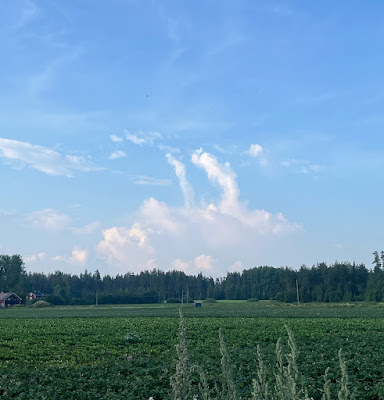It has been quite great weather for shooting cloudscapes in this and past month. Although there has been wind and rain, and managed to shoot some new footage. My main problem seems to be procrastination.
This was quite good, there is sun rays in the sky, clouds, sunset and stars in the sky at the end.
One thing that bothers me a bit, is that I have set the timelapse interval in 6 second, and I shoot in A-mode, which keeps the aperture fixed and exposure time varies due lighting condition and when it gets really dark, exposure is ramped up in max, which is in this case 30 seconds. That means that the speed of the video will accelrate as you can see around 0:47 time mark.
My other blogs:
Roadscape Photography
Chevrolet El Camino 1970
Life @ Köyliö, mostly Finnish









